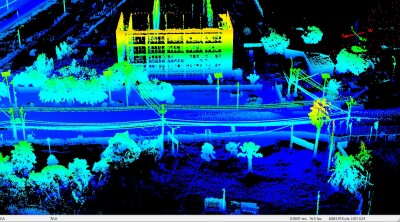The Platforms for Advanced Wireless Research (PAWR) Project Office announces the significant expansion of AERPAW – the first wireless research platform to study the convergence of 4G/5G technology and autonomous drones –  as it launches into a second phase of operations. The testbed now includes four additional wireless towers, a total of eight unmanned aerial vehicles (UAVs), and a flight field that is roughly triple the size of the previously covered area. AERPAW has also been designated as an Open Test and Integration Center (OTIC) by the O-RAN ALLIANCE.
as it launches into a second phase of operations. The testbed now includes four additional wireless towers, a total of eight unmanned aerial vehicles (UAVs), and a flight field that is roughly triple the size of the previously covered area. AERPAW has also been designated as an Open Test and Integration Center (OTIC) by the O-RAN ALLIANCE.
Originally launched in 2019 as part of the PAWR program created by the U.S. National Science Foundation, AERPAW is based at North Carolina State University and offers a combination of programmable and commercial wireless infrastructure. Software defined radios (SDRs) enable research with open source software stacks for studying and optimizing the performance of radio signals. Commercial radio equipment from Ericsson enables studies of mid-band spectrum use and provides a robust 5G link for high-throughput communications. Multiple RF sensors from Keysight allow real-time spectrum monitoring and signal classification.
Unique to AERPAW, the wireless testbed brings with it several assets specific to testing drone-based networks. These include custom UAVs, available drone pilots, flight waivers, and an Innovation Zone license for extended spectrum access granted by the Federal Communications Commission.
The AERPAW platform also notably combines an outdoor footprint with a robust digital twin environment. The digital twin is used to emulate radio software, signal traffic generation, and vehicle control. Researchers can develop and run virtual experiments using the AERPAW digital twin, and then seamlessly transfer their software to the real-world outdoor environment.
“The expansion of AERPAW opens up vast new avenues of research,” said Ismail Guvenc, AERPAW Principal Investigator, and engineering professor at NC State University. “We can now support studies of dynamic flight optimization, experiments to localize sources of signal interference from the air, and research on the impact of drone orientation, speed, and tilt on network performance. It is possible to run experiments with multiple UAVs at once and to interact with portable radio nodes placed on both drones and unmanned ground vehicles across a wide geographic region.”
There are several ways to leverage the AERPAW platform. Researchers can set up an account to access the digital twin environment, select virtual resources, and either run pre-programmed sample experiments or create code for custom experiments. Once an experiment is completed in the digital twin, users can work with the AERPAW team to execute it with live resources in the outdoor testbed. AERPAW also offers an experiment-as-a-service model. This approach provides more flexibility for researchers who want to design their own live UAV experiments – either with or without their own additional equipment and software – but requires more significant investment and engagement with the AERPAW team.
“The PAWR platforms cover a diverse set of geographies and research domains, and we are inspired by what AERPAW has added in this expansion phase,” said Ellen Zegura, division director for NSF’s Division of Computer and Network Systems. “The tight coupling between AERPAW’s digital twin and its outdoor testbed provide unique opportunities for interdisciplinary research. By hosting emulation software for both radio signaling and vehicle control, AERPAW is enabling sophisticated modeling alongside the resources for real-world testing. It is a game-changer for development in the fields of wireless networking and unmanned aerial systems.”
In addition to AERPAW, PAWR wireless testbeds include POWDER in Salt Lake City, Utah; COSMOS in New York City; and ARA in Ames, Iowa. The PAWR program also includes Colosseum, the world’s largest radiofrequency emulator, located in Boston.
For more information on AERPAW, visit https://aerpaw.org/. For more information on the PAWR program, visit, https://advancedwireless.org/.
About the PAWR Project Office (PPO)
The Platforms for Advanced Wireless Research Project Office (PPO) manages the $100 million public-private partnership and oversees the research platforms. The PPO is co-led by US Ignite and Northeastern University, and funded by the U.S. National Science Foundation and PAWR industry consortium. The PPO collaborates closely with the wireless research community, local communities, and industry, in part through the industry consortium, in the design, development, deployment, and initial operations of the research platforms.
Source: Platforms for Advanced Wireless Research Project Office
















Comments